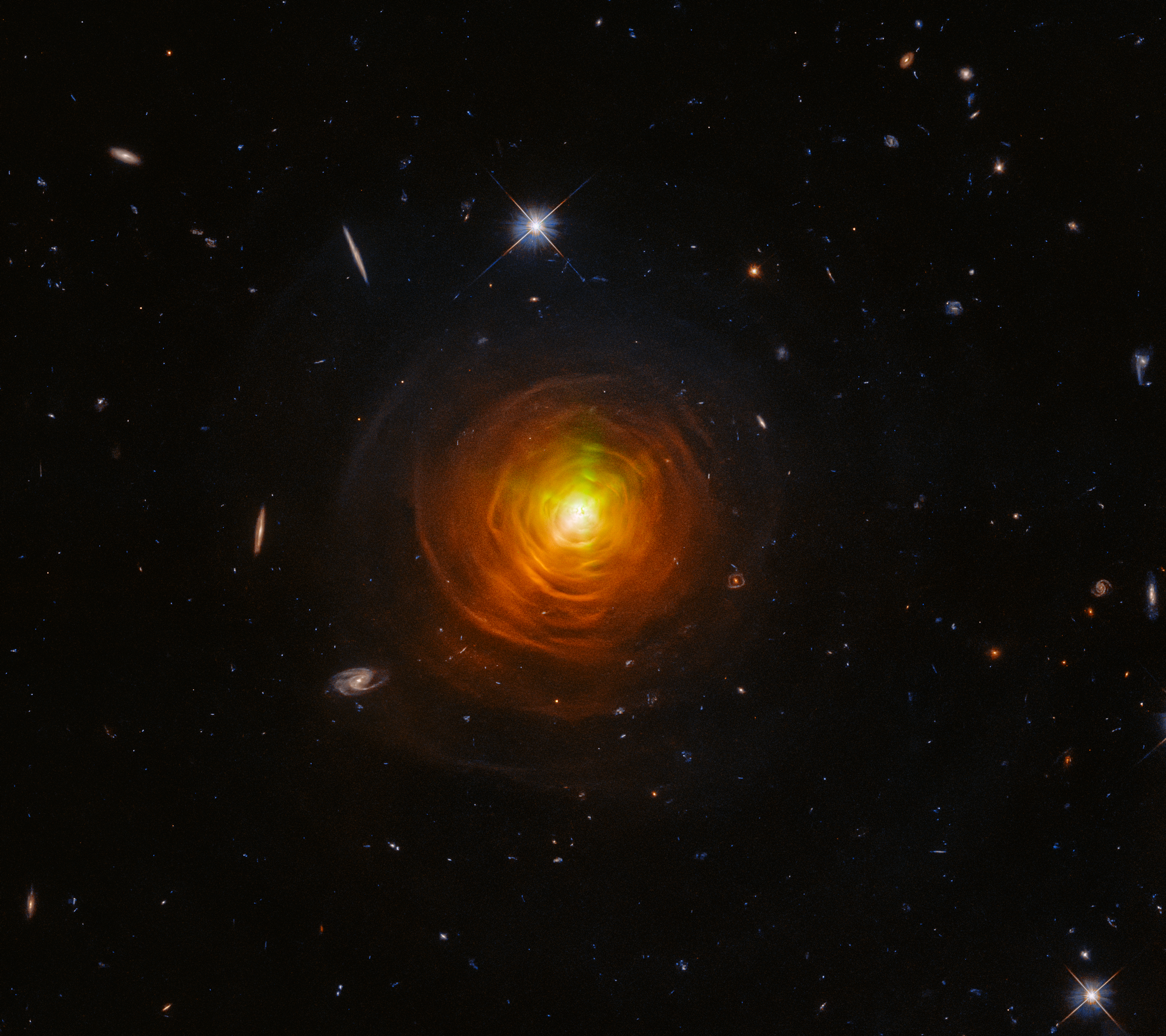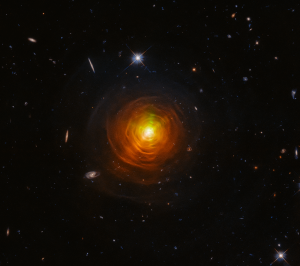
CW Leonis
The orange-red "cobwebs" in this Hubble image are dusty clouds of sooty carbon engulfing the dying star CW Leonis. They were created from the outer layers of the star being thrown out into the inky black void. The carbon, cooked up through nuclear fusion in the star's interior, gives it a carbon-rich atmosphere. Blasting the carbon back into space provides raw material for the formation of future stars and planets. All known life on Earth is built around the carbon atom. Complex biological molecules consist of carbon atoms bonded with other common elements in the universe. At a distance of 400 light-years from Earth, CW Leonis is the closest carbon star. This gives astronomers the chance to understand the interplay between the star and its surrounding, turbulent envelope. The complex inner structure of shells and arcs may be shaped by the star’s magnetic field. Detailed Hubble observations of CW Leonis taken over the last two decades also show the expansion of threads of ejected material around the star. For more information: https://hubblesite.org/contents/media/images/2021/059/01FJW7YS4R5WJNFY1H3VTF56EZ
- X



























